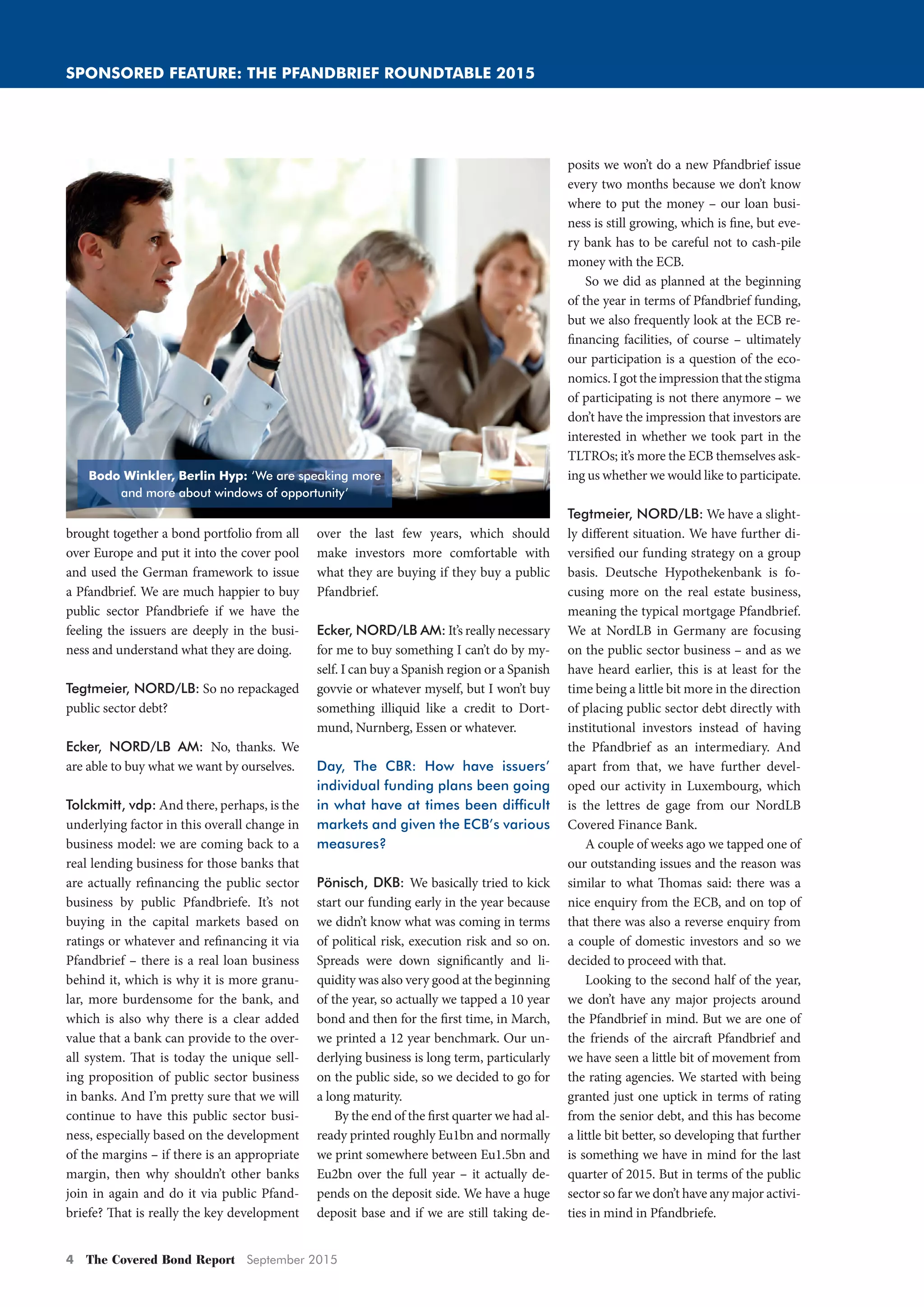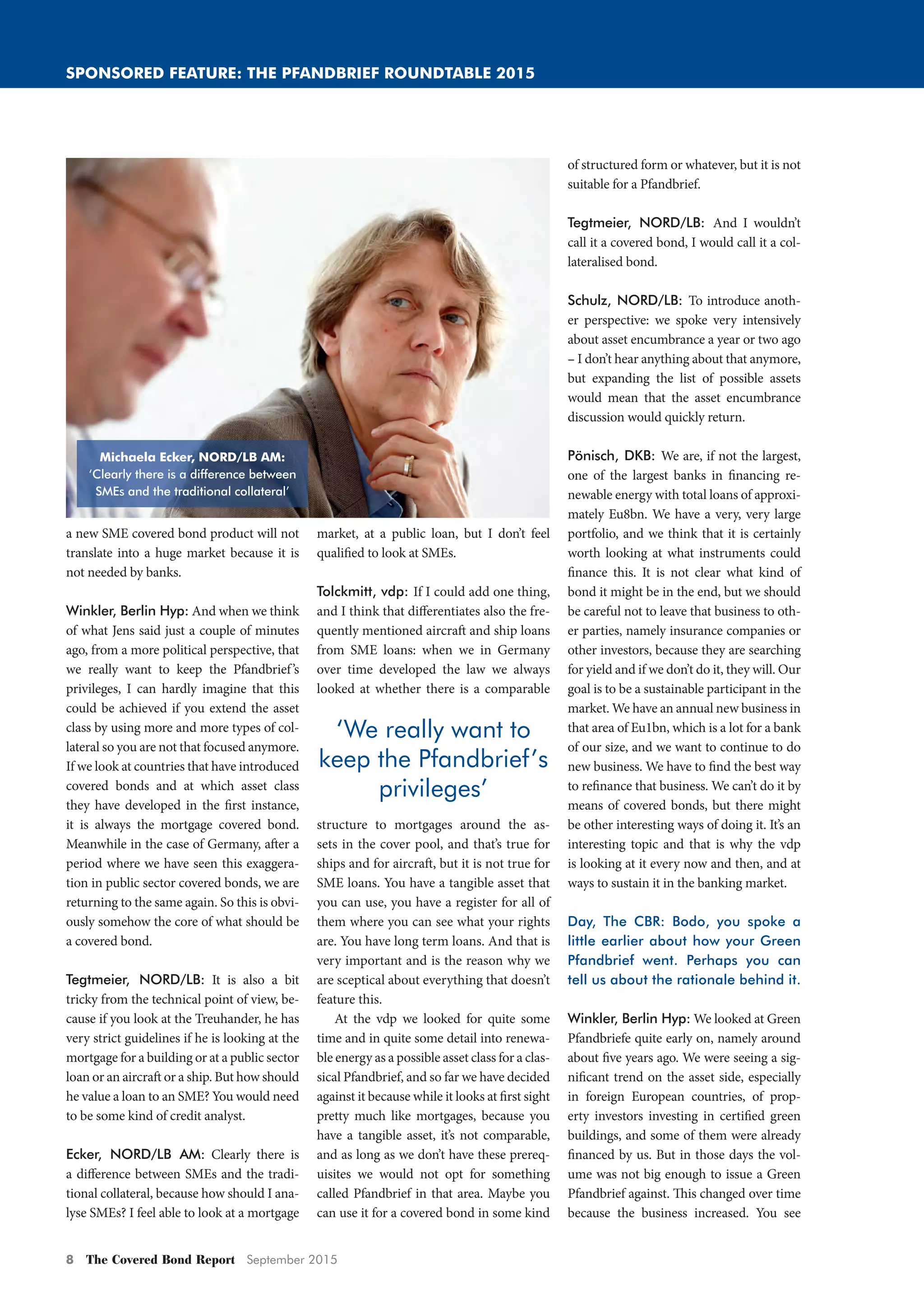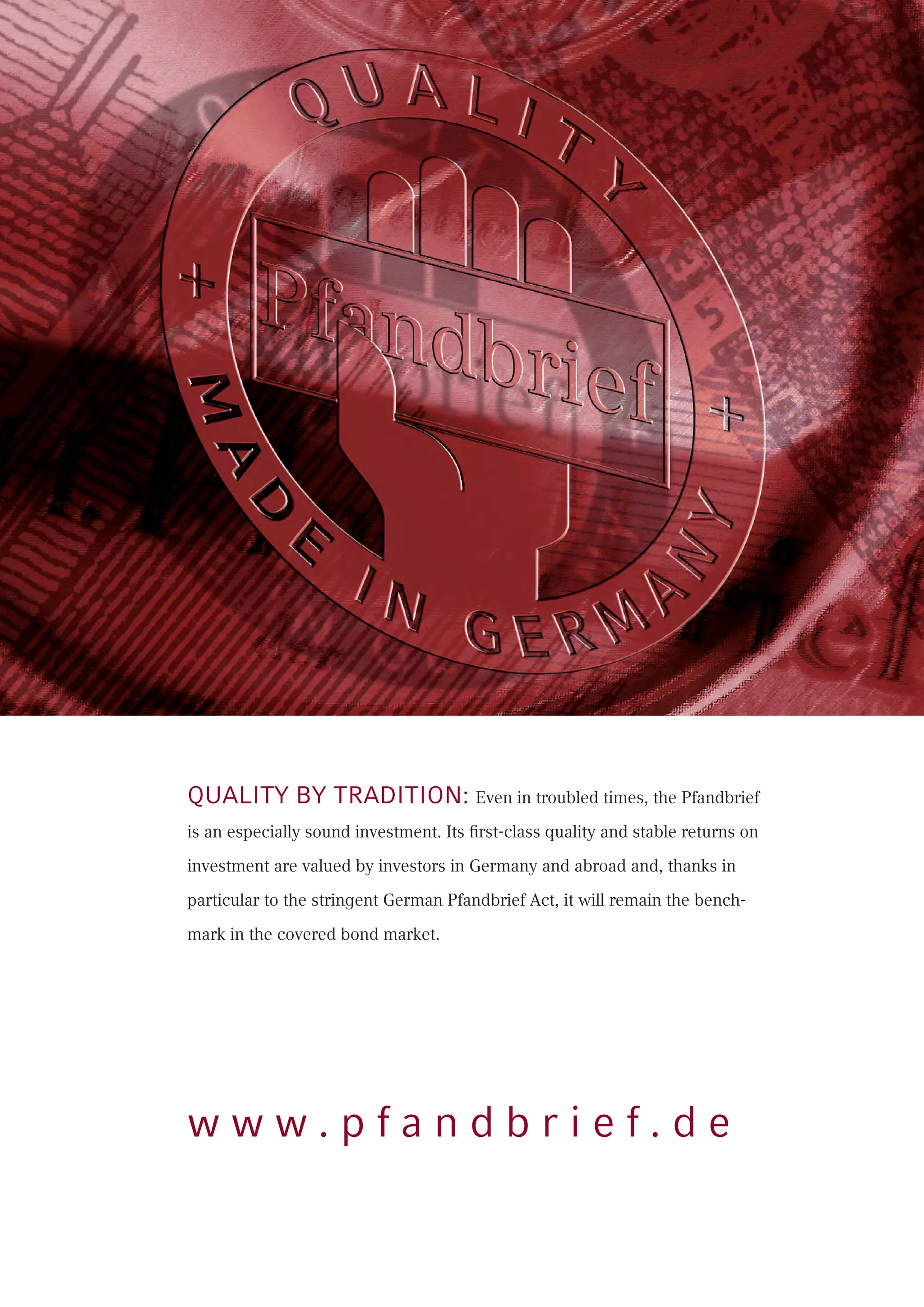The Pfandbrief Roundtable 2015 discusses the current state and developments in the covered bond market, highlighting a positive outlook on pfandbrief issuance despite challenges including negative net supply. Participants note a shift towards a more sustainable, granular lending business, with a focus on public sector and mortgage pfandbriefe, amidst varying interest rates and regulatory changes. The impact of ECB measures on the market is debated, with concerns over increased competition and pricing pressures arising from ECB interventions.











